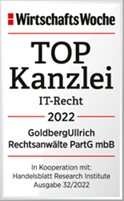On 1 October 2009, the Patent Law Simplification and Modernisation Act entered into force (Federal Law Gazette I p. 2521). The core of the law is the intended acceleration of the so-called nullity proceedings. In these proceedings, a court examines whether a patent was rightly granted. In particular, the following points were changed:
- In the first instance before the Federal Patent Court, the court must now expressly draw the parties' attention to issues that are relevant for the court's decision but have not yet been sufficiently discussed by the parties in their previous submissions to the court. In this way, the parties know better what is important to the court and they can focus their further submissions on the essentials. By setting a time limit, the opposing party and the court are protected from surprising new submissions, which in many cases have so far only been presented at the oral hearing. This has often led to a prolongation of the proceedings.
- The appeal procedure before the Federal Supreme Court is also to be faster in the future. The aim is to halve the duration of proceedings, which currently exceeds four years. Under the procedural law currently in force, an appeal in patent nullity proceedings opens up a completely new instance; this means that the entire material of the first instance may have to be heard again. This regularly requires the appointment of an expert witness, which is very time-consuming. Since 1 October 2009, the appeal will focus on reviewing the decision of the first instance for errors, as has been the practice in the Code of Civil Procedure (ZPO). Patent owners, competitors and the public will thus receive clarity more quickly as to whether the patented invention is protected or not.
The procedure for employee inventions, which account for about 80 per cent of all inventions, was also simplified. The objective of the Employee Inventions Act is to ensure that the invention created in the employment relationship is attributed to the employer and that the employee receives appropriate remuneration for it. Previously, the employer and the employed inventor had to exchange several declarations with different deadlines for this purpose. These formalities have repeatedly led to errors in company practice. Now, a so-called claiming fiction is to apply: According to this, employee inventions are automatically transferred to the employer four months after they are reported if the employer does not release the invention beforehand. In substance, however, the tried and tested reconciliation of interests will remain in place: the employer is basically entitled to the employee's service inventions. In return, the employee receives a claim to remuneration.
Source: Press release of the Federal Ministry of Justice
Goldberg Attorneys at Law
Attorney at Law Michael Ullrich, LL.M. (Information Law)
Specialist lawyer for information technology law
E-mail: m.ullrich@goldberg.de


